|
|
| |
| Padma Perfumery Works Replenish your senses! |
| Rose Incense |
White Musk Incense |
Al Oudh Incense |
Sheik Al Arab Blue |
Jasmine Incense |
|
|
|
|
|
 |
 |
 |
 |
 |
|
|
|
Aloeswood Incense
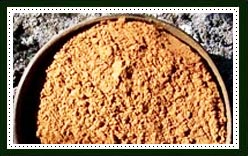 Aloeswood(also known as Agarwood) is a dark resinous heartwood produced by a type of evergreen trees called Aquilaria found mainly in the rainforests of northern India, Laos, Cambodia, Malaysia, Indonesia, Philippines, Borneo and Vietnam. It's scientific name is Aquilara Malaccensis Lam. or Aquilaria agallocha. Aloeswood incense are very popular for their unique fragrance and qualities, and so are the other incense products like incense sticks, agarbatti, dhoopbatti, dhoop sticks, incense cones made from agarwood or aloeswood. Aloeswood are also known as agarwood.
Aloeswood(also known as Agarwood) is a dark resinous heartwood produced by a type of evergreen trees called Aquilaria found mainly in the rainforests of northern India, Laos, Cambodia, Malaysia, Indonesia, Philippines, Borneo and Vietnam. It's scientific name is Aquilara Malaccensis Lam. or Aquilaria agallocha. Aloeswood incense are very popular for their unique fragrance and qualities, and so are the other incense products like incense sticks, agarbatti, dhoopbatti, dhoop sticks, incense cones made from agarwood or aloeswood. Aloeswood are also known as agarwood.
These evergreen trees grows upto 40 meters high and 60 centimeters in diameter and bears yellowish green sweet smelling flower. The Aquilaria trees secrete the aloeswood resin as a response to an attack from a type of parasitic ascomycetous mold called Phialophora parasitica. The heartwood remains in its original light pale color prior to the infection but as the the infection increases it assumes a dense dark color as a result of the resin secreted by the tree. This prized resin is also known as Jinko, Aloeswood, or Oud and is extensively used by the traditional Chinese, Unanai, Ayuravedic, and Tibetan physicians as a cure for a wide variety of infections and ails. The wood in in its pure form is very rare and difficult to obtain and is extremely expensive. Kyara is considered to be the best quality and is commercially available in four types : Green, Iron, Purple and Black. Due to the high density of the aloeswood incense it sinks in water, therefore it is also called as sinking incense.
Aloeswood, aloeswod incense sticks and its oil has been of great cultural significance throughout the civilizations of the world and is found to be mentioned in ancient most written texts like the Indian Vedas and the Viatnamese Nan zhou yi wu zhi chronicals. The Harsacharitra depicts the use of aloeswood products such as "Xasipaat" ( writing material ) and "aloe-oil" in ancient Assam in the 7th century. Specially treated barks of this aromatic evergreen tree was used to give written expression to sermons, history and religious texts.
Ayurveda quotes that, "The wood is acrid, bitter, thermogenic, digestive, carminative, deodorant, sudorific, andoyne, anti-inflammatory, anti-leprotic, depurative, cardiotonic, rejuvenating and tonic. It is useful in vitiated conditions of vata and kapha, halitosis, dyspepsia, anorexia, cardiac debility, skin disease, leprosy, foul ulcers, hypothermia, inflammations, rheumatoid arthritis, cough, asthma, hiccough, albuminuria and general debility. An external application of agaru is very useful in vomiting in children, pectoralgia due to pneumonia and cepalagia. The oil is astringent, acrid, bitter, thermogenic, depurative, alexeteric and anti-leprotic. It is useful in vitiated conditions of vata and kapha, rheumatoid arthritis, cough, asthma, bronchitis, skin diseases, leprosy and foul ulcers."
Classification of Aloeswood
Aloeswood are of six major types according to traditional Japanese classified classification. They are :
Kyara : Kyara is the most famous and the best quality of Aloes wood available. Its dour is described as "A gentle and dignified smell with a touch of bitterness. The fragrance is like an aristocrat in its elegance and gracefulness."
Rakoku : Rakoku has a sharp bitter pungent smell and is said to remind one of a warrior.
Manaka : Smells light and enticing and the fragrance disappears very quickly.
Manaban : Manaban is known to have a coarse, unrefined sweet smell.
The other two types are namely Sasora and Sumotara which are comparatively cheap, has a sourish smell and are often mistaken with Kyara.
Biological Profile
- Kingdom : Plantae
- Classification : Angiosperms, Eudicots, Rosids
- Order : Malvales
- Family : Thymelaeaceae
- Genus : Aquilaria.
Aquilaria species that produce agarwood
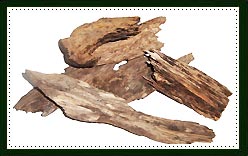 The following Species of Aquilaria Produce Aloeswood :
The following Species of Aquilaria Produce Aloeswood :
- Aquilaria khasiana, found in India
- Aquilaria apiculina, found in Philippines
- Aquilaria baillonil, found in Thailand and Cambodia
- Aquilaria baneonsis, found in Vietnam
- Aquilaria beccarain, found in Indonesia
- Aquilaria brachyantha, found in Malaysia
- Aquilaria crassna found in Cambodia, Malaysia, Thailand, and Vietnam
- Aquilaria cumingiana, found in Indonesia and Malaysia
- Aquilaria cumingiana, found in Indonesia and Malaysia
- Aquilaria filaria, found in China
- Aquilaria grandiflora, found in China
- Aquilaria hilata, found in Indonesia and Malaysia
- Aquilaria malaccensis, found in Malaysia, Thailand, and India
- Aquilaria microcapa, found in Indonesia and Malaysia
- Aquilaria rostrata, found in Malaysia
- Aquilaria sinensis, found in China
- Aquilaria subintegra, found in Thailand.
We manufacture, supply and export all types of aloeswood, aloeswood incense, and other aloeswood incense products like agarbatti, dhoopbatti, dhoop sticks, incense sticks made from aloeswood. Contact us to buy or for more information on any types of aloeswood incense products.
|
|
|


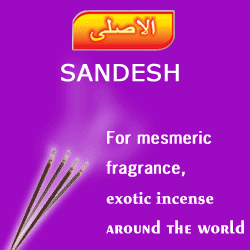

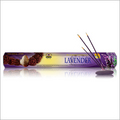
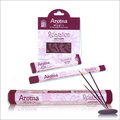
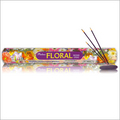
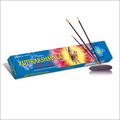
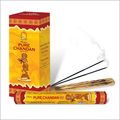
 Aloeswood(also known as Agarwood) is a dark resinous heartwood produced by a type of evergreen trees called Aquilaria found mainly in the rainforests of northern India, Laos, Cambodia, Malaysia, Indonesia, Philippines, Borneo and Vietnam. It's scientific name is Aquilara Malaccensis Lam. or Aquilaria agallocha. Aloeswood incense are very popular for their unique fragrance and qualities, and so are the other incense products like incense sticks, agarbatti, dhoopbatti, dhoop sticks, incense cones made from agarwood or aloeswood. Aloeswood are also known as agarwood.
Aloeswood(also known as Agarwood) is a dark resinous heartwood produced by a type of evergreen trees called Aquilaria found mainly in the rainforests of northern India, Laos, Cambodia, Malaysia, Indonesia, Philippines, Borneo and Vietnam. It's scientific name is Aquilara Malaccensis Lam. or Aquilaria agallocha. Aloeswood incense are very popular for their unique fragrance and qualities, and so are the other incense products like incense sticks, agarbatti, dhoopbatti, dhoop sticks, incense cones made from agarwood or aloeswood. Aloeswood are also known as agarwood.
 The following Species of Aquilaria Produce Aloeswood :
The following Species of Aquilaria Produce Aloeswood :
